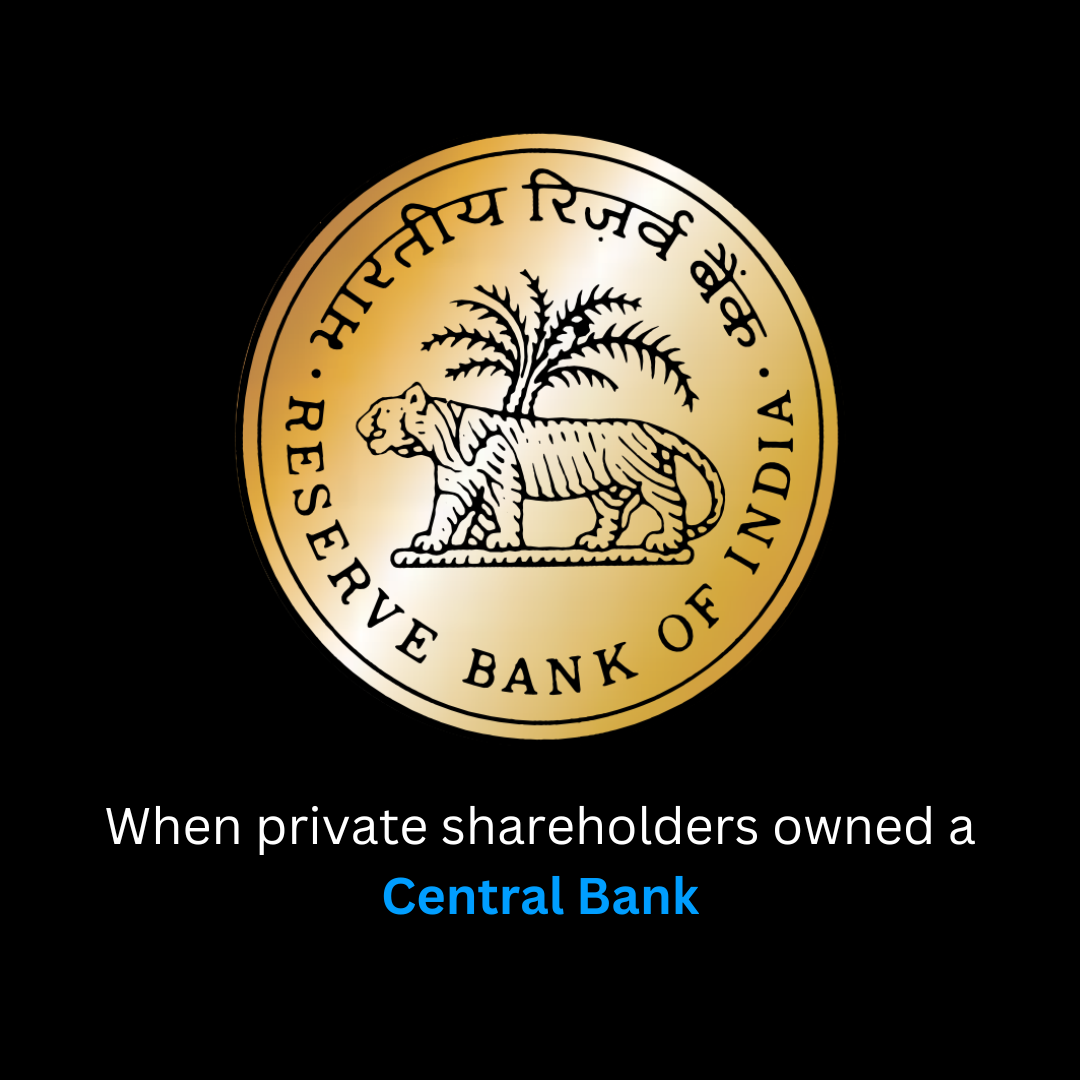Financial Literacy Week, a nationwide initiative spearheaded by the Reserve Bank of India (RBI) is conducted every year in February (since 2016) to promote awareness about financial products, services, and responsible practices.
However, a compelling question arises: how many of us know the true purpose of the RBI and its genesis?
During World War I from 1914 to 1919, Indian banking faced significant challenges. The war caused panic in the market, leading people to withdraw money from banks. The British government, also in need of resources for the war, turned to India for help. Indian banks agreed to lend the government money for the war, but they didn’t have enough money to cover everything. Plus, there wasn't a good system to make sure everything was okay with the money they had.
The situation was aggravated in the absence of a regulatory body to monitor the adequacy of reserves. This eventually led to a financial crisis and 83 out of 1100 Indian banks failed during the war years.
In an attempt to regulate the banking system, the British government its three presidency banks - Bank of Bengal, Bank of Bombay, and Bank of Madras - into the Imperial Bank of India in 1921 (which is now called the State Bank of India). But it did not fully entrust it with all the central banking functions The Government came under severe criticism for its currency and exchange policies. There was also a conflict of interest between the central bank and commercial bank responsibilities of the Imperial Bank when it came to profit maximization.
Young Hilton Commission was set up to examine the failure of the Indian Banking system. It revealed the weakness of the system, where the control of currency and credit was in the hands of two different authorities. It strongly recommended the establishment of a central bank, called the ‘Reserve Bank of India’, and entrusting all central banking functions to it.
This RBI Act was first proposed by the Royal Commission in 1926 but failed in 1927. After years of debate, the Reserve Bank of India (RBI) finally opened its doors in 1935, headquartered in Calcutta (now Kolkata) but was moved to Bombay (now Mumbai) in 1937.
Think of the RBI as the conductor of India's financial orchestra. Its purpose was to regulate India's monetary and credit system, issue currency notes, and manage foreign exchange reserves. The Bank was established as a shareholders’ Bank, with a paid-up capital of Rs. 5 crores. The issue of shares to the public was made in March and the Bank was formally inaugurated on Monday, April 1, 1935.
The share flotation in March 1935 was the largest of its kind ever attempted in the country. Despite this, the issue was heavily oversubscribed. The picture is of one of the first dividend warrants issued in 1936 to the shareholders. The rate of dividend is indicated as 2 rupees and 10 annas.
Although RBI started as a central bank, at the time of its opening, the general public was also allowed to open bank accounts in RBI, which is not allowed today. The bank was nationalized on 1 January 1949 under the terms of the Reserve Bank of India (Transfer to Public Ownership) Act, 1948.
Interestingly, the RBI also acted as Burma's (now Myanmar) central bank until April 1947 when Burma seceded from the Indian Union in 1937.
Furthermore, after the Partition of India in August 1947, RBI also served as the central bank for Pakistan until June 1948 when the State Bank of Pakistan commenced operations because RBI managed all the accounts before that until they had their central bank.
What further distinguished the RBI was its focus on development, especially in agriculture. From its inception, the Bank recognized the crucial role finance could play in fostering India's growth.
Later, during the 1960s, this focus intensified. The RBI embraced the concept of using finance to catalyze development, actively supporting various initiatives. It also played a key role in creating other important banks and organizations, like the Deposit Insurance and Credit Guarantee Corporation, to strengthen the country's financial infrastructure.
With liberalization, the RBI's focus shifted back to its core central banking functions: setting monetary policy, regulating banks, and ensuring a smooth payment system. However, its commitment to progress hasn't wavered.
RBI has been taking measures to improve financial literacy in the country and thus has been conducting Financial Literacy Week (FLW) every year since 2016 to propagate financial education messages on relevant themes including “MSMEs”, “Credit Discipline and Credit from Formal Institutions”, and “Digital Financial Literacy,” and so on. As India's financial landscape continues to evolve, RBI will undoubtedly remain at the helm, building a strong, secure and accessible financial system for everyone in India.
References
- https://rbi.org.in/commonman/English/Currency/Scripts/RetrospectonIndianCurrency.aspx
- https://rbi.org.in/history/Brief_History.html#:~:text=Burma%20(Myanmar)%20seceded%20from%20the,and%20later%20upto%20April%2C%201947.
- https://rbi.org.in/history/Brief_Chro1935to1949.html
- https://pib.gov.in/PressReleasePage.aspx?PRID=1899008#:~:text=Reserve%20Bank%20of%20India%20(RBI,Financial%20Literacy%E2%80%9D%20and%20so%20on.
- https://rbidocs.rbi.org.in/rdocs/content/PDFs/89634.pdf
- https://www.rbi.org.in/commonman/English/History/Scripts/anecdote2.aspx#
- https://www.history.com/news/world-war-i-cause-great-depression
- https://ehs.org.uk/the-great-war-and-evolution-of-central-banking-in-india/
- https://files.ehs.org.uk/wp-content/uploads/2020/11/29060820/daf206f7-307b-436a-b03f-2d14de2d4b4b.docx
- https://core.ac.uk/download/pdf/6908398.pdf
- https://thediplomat.com/2017/10/when-burma-was-still-part-of-british-india/
- https://en.wikipedia.org/wiki/Reserve_Bank_of_India#
- https://en.wikipedia.org/wiki/Imperial_Bank_of_India
- https://bankofmaharashtra.in/the-begininghttps://www.livemint.com/Politics/LGfzv2gdw1QWb0qFnvzPZL/WBanksList.html
- https://www.livemint.com/Sundayapp/fjheowjLjiFNsGcjzVZXsO/Banking-crises-An-Indian-history.html
- https://en.wikipedia.org/wiki/The_Madras_Bank_(1683)
- https://www.tribuneindia.com/2005/20050626/spectrum/main1.htm
